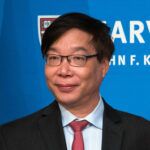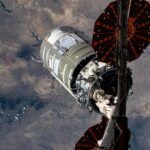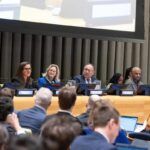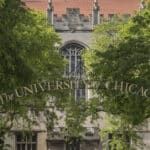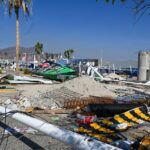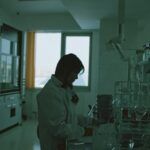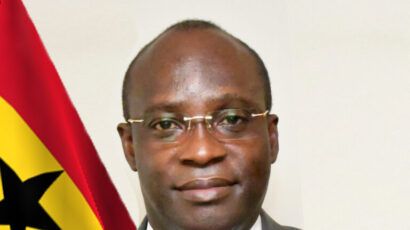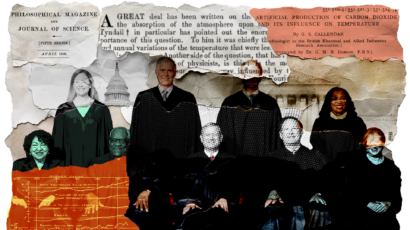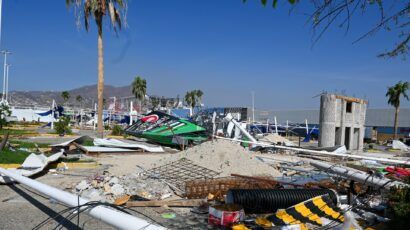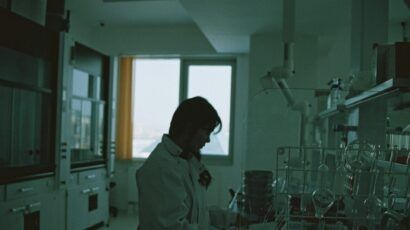Assessing North Korea’s uranium enrichment capabilities
By Hui Zhang | June 18, 2009
As retaliation against tighter U.N. sanctions, on Saturday North Korea defiantly threatened to expand its nuclear arsenal and begin a program of uranium enrichment–a threat it first made in response to U.N. condemnation of its early April rocket launch. Compared to North Korea’s well-known plutonium production program, the nature of Pyongyang’s highly enriched uranium (HEU) program is less clear.
The HEU issue first surfaced in October 2002, when North Korean First Deputy Foreign Minister Kang Sok Ju reportedly acknowledged the existence of such a program in response to allegations made by U.S. officials who were visiting Pyongyang. Ever since, though, Kang and other North Korean officials have consistently denied that the country is enriching uranium.
What does the publicly available information reveal about the North Korean enrichment program? A November 2002 declassified CIA report to Congress stated, “North Korea was constructing a plant that could produce enough weapons-grade uranium for two or more nuclear weapons when fully operational–which could be as soon as mid-decade.” And a declassified August 2007 Director of National Intelligence report noted, “We continue to assess with high confidence that North Korea has pursued efforts to acquire a uranium enrichment capability, which we assess is intended for nuclear weapons. All intelligence community agencies judge with at least moderate confidence that this past effort continues. The degree of progress toward producing enriched uranium remains unknown, however.”
The main evidence regarding Pyongyang’s HEU program includes:
- Acquisition of about 24 P1 and P2 centrifuges, blueprints, a flow meter, and special oils for centrifuges, as well as visits to top-secret centrifuge plants built by A. Q. Khan.
- Import of 150 tons of high-strength aluminum tubes from a Russian trader. As of 2008, these tubes haven’t been used for centrifuges, which U.S. experts confirmed when North Korea allowed them to see the tubes. U.S. scientists did find traces of enriched uranium on aluminum tubing that Pyongyang had provided to prove that it wasn’t conducting enrichment activities, but there is still some argument about the source of these traces.
- A blocked shipment of 22 tons worth of high-strength aluminum tubes in April 2003. Other unfulfilled orders of high-strength aluminum tubes also have been reported.
- An attempt to buy two electrical-frequency converters from a Japanese firm in 1999, and a repeat effort to purchase three converters four years later.
- Acquisition of equipment suitable for use in uranium feed-and-withdrawal systems.
- Reports of traces of HEU on documents submitted to the United States as part of North Korea’s nuclear declaration. However, there has been no confirmation of the source of these traces.
In short, there isn’t recent evidence of North Korean procurements for a large-scale centrifuge program, as one senior U.S. official knowledgeable about the intelligence on North Korea’s nuclear program noted in January 2007. Moreover, there isn’t convincing or overwhelming evidence to support the existence of the construction of a large-scale centrifuge facility in the last several years.
How long would it take North Korea to have production-scale centrifuge enrichment? The 2002 CIA estimate may have been based on a “worst-case” scenario that assumed Pyongyang could use the high-strength aluminum tubes it acquired from Russia to produce centrifuges, possessed every other difficult-to-manufacture component such as bottom bearings and ring magnets, and had the expertise or outside help to build and install thousands of centrifuges within a few years. In any case, the 150 tons of high-strength aluminum North Korea acquired would be enough for about 2,600 P1 centrifuges.
Still, it likely would take many more years to get the centrifuges fully functional. Consider Iran, for example. It took Tehran about 20 years from the time it procured the complete P1 designs to the time it had a substantial number of P1s operating. To run a centrifuge enrichment plant, Pyongyang would need to overcome many difficult engineering challenges. So it seems unlikely that North Korea will succeed in establishing a substantial enrichment capability using this technology in the near term.
That timetable could accelerate, however, if Iran is willing to impart to North Korea the knowledge it accumulated at its Natanz Fuel Enrichment Plant, which utilizes the same P1 centrifuge. Given that both Iran and North Korea have similar strategic goals and a common enemy (the United States), close collaboration between the two countries is a possibility–although there is a good chance that Western intelligence agencies would detect such collaboration.
Either way, the publicly available evidence seems to indicate that North Korea has a very limited capacity for enrichment, and the number of centrifuges it could produce would be dependent upon the quantity of materials it already acquired from abroad. Obviously, it would be significantly more difficult for Pyongyang to get those materials now, considering the international attention on its nuclear program and the stricter control of those materials since the start of the North Korean nuclear crisis.
Hypothetically, if North Korea builds a plant with up to 2,600 P1 centrifuges, it could produce around 20 kilograms of 90 percent HEU per year. Since Pyongyang already has developed implosion-type plutonium bombs, it could theoretically also produce an implosion-type design for an HEU bomb, which would save considerable amounts of HEU. For example, if Pyongyang plans to build a compact, lower-yield bomb (let’s say the 4-kiloton bomb it told China it tested in 2006), it could use less than 10 kilograms of HEU for each bomb. In addition, North Korea has plenty of natural uranium reserves, with estimates of up to 300,000 metric tons.
If Pyongyang were to successfully develop a centrifuge enrichment program, it would pose a huge challenge in verifying North Korean denuclearization. Unlike plutonium production, which involves a reactor that is difficult to hide because of the heat it generates, and a reprocessing facility, which leaks fission products that are detectable off-site, a compact centrifuge uranium enrichment facility could be easily concealed from satellite imagery and off-site sampling. Thus, verification would entail intrusive inspections and greater cooperation from Pyongyang.
Even worse, HEU is attractive to sub-national groups looking for a nuclear capability. While a plutonium bomb requires the assembly of a complicated weapons system to deal with pre-detonation issues, a HEU bomb is relatively easy to construct. And there is little disagreement that a terrorist group would be able to design and produce a HEU-based gun-type weapon or that it could be expected to work without testing. Moreover, unlike plutonium, HEU poses no significant health hazards during the construction phase because of its low level of radiation.
The idea of Pyongyang selling HEU to terrorist groups is scary, and history has demonstrated North Korea’s willingness to sell a wide range of dangerous materials to other states–missiles, missile technologies, drugs, etc. Its export of missile components and technology to Iran has been particularly troublesome. Also, North Korea reportedly helped Syria build a reactor that Israeli air strikes destroyed in September 2007. The prevailing fear is that the North Korean economic situation will deteriorate to even more desperate levels, causing Pyongyang to recklessly sell its nuclear weapons and materials.
The sale of bomb-grade nuclear material to another state or a terrorist group is a dangerous strategy for North Korea, and the chances of such a transfer are admittedly small. But once Pyongyang accumulates enough nuclear material to spare, the risk could increase. Therefore, the international community must act now to draw North Korea to the negotiation table. Otherwise, it’s only giving Pyongyang more time to expand its nuclear program.
Together, we make the world safer.
The Bulletin elevates expert voices above the noise. But as an independent nonprofit organization, our operations depend on the support of readers like you. Help us continue to deliver quality journalism that holds leaders accountable. Your support of our work at any level is important. In return, we promise our coverage will be understandable, influential, vigilant, solution-oriented, and fair-minded. Together we can make a difference.
Topics: Nuclear Weapons, Opinion
